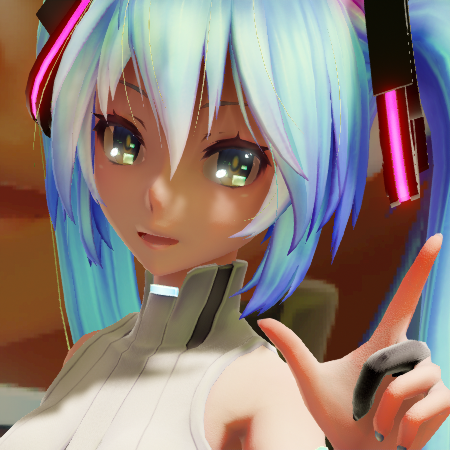

Since the vertex normals are the average of the adjoining face normals, we can change them just by creating a new face. Just like a super-ball bounces strangely when it hits an odd angle. For instance, sphere maps need to bounce off of a surface to figure out what to draw, and the angles that they bounce at depend on the normal of what they’re bouncing off. And there are other effects, like specular highlights and sphere maps that also use this normal. It uses the normal to figure out how strongly that pixel should be affected by lighting. MMD does the same thing when it draws models. As the angle between the sun and the moon’s surface changes, less and less light gets reflected from the moon to our eye. When light strikes a surface head-on, it’s very bright, and so in the picture above, you can see that the sun must lie off to the right. Next half moon, take a look at the sky:Įven though it’s night, the moon is far enough away that it’s still being lit by the sun. When MMD renders a pixel, the pixel’s normal is as important as the pixel’s location. Sometimes, it’s a lot smoother than we’d like…. Even when your vertices are chunky, the lighting will flow. Since normals are really important in lighting– which is really, really important in rendering– this smooths out the lighting. It uses something called interpolation to make the normals change smoothly along the face. Then it sort of averages the normals of the three vertices and uses that value for that pixel. When MMD draws pixels, it looks at the three vertices that make up the pixel’s face and figures out where the pixel lies in relation to those vertices. So PMXE takes the normals of all of the faces using a vertex, averages them, and assigns that to the vertex. Once you get to MMD, there isn’t any such thing as a face. And normals are normalized too! But they’re two different things, and a lot of things are normalized that aren’t normals. Normalization means when you take a line and lengthen or shorten it until it’s length is exactly one unit. The word is confusing, because you may have heard of normalization, which means something different.

For instance, if your desk was a face, the normal would extend straight up– or straight down. Orthogonal is a fancy way of saying that it extends at right angles to the face. What are normals? What are normal maps? How can I use normal maps in MMD? How can I fix my normals? How do I make hard edges in MMD? How do I make normal maps? How can I modify normal maps? What are n ormals?Ī normal is the line that extends out orthog onally from a face.


 0 kommentar(er)
0 kommentar(er)
